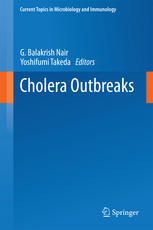

Most ebook files are in PDF format, so you can easily read them using various software such as Foxit Reader or directly on the Google Chrome browser.
Some ebook files are released by publishers in other formats such as .awz, .mobi, .epub, .fb2, etc. You may need to install specific software to read these formats on mobile/PC, such as Calibre.
Please read the tutorial at this link: https://ebookbell.com/faq
We offer FREE conversion to the popular formats you request; however, this may take some time. Therefore, right after payment, please email us, and we will try to provide the service as quickly as possible.
For some exceptional file formats or broken links (if any), please refrain from opening any disputes. Instead, email us first, and we will try to assist within a maximum of 6 hours.
EbookBell Team

4.1
70 reviewsThe most feared attribute of the human pathogen Vibrio cholerae is its ability to cause outbreaks that spread like wildfire, completely overwhelming public health systems and causing widespread suffering and death. This volume starts with a description of the contrasting patterns of outbreaks caused by the classical and El Tor biotypes of V. cholerae. Subsequent chapters examine cholera outbreaks in detail, including possible sources of infection and molecular epidemiology on three different continents, the emergence of new clones through the bactericidal selection process of lytic cholera phages, the circulation and transmission of clones of the pathogen during outbreaks and novel approaches to modeling cholera outbreaks. A further contribution deals with the application of the genomic sciences to trace the spread of cholera epidemics and how this information can be used to control cholera outbreaks. The book closes with an analysis of the potential use of killed oral cholera vaccines to stop the spread of cholera outbreaks.